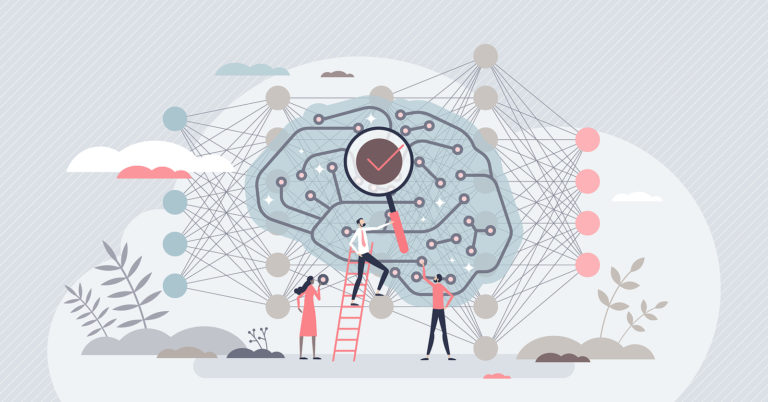How AI supports the President’s Management Agenda goals
The Biden Administration’s President’s Management Agenda (PMA) focuses in on three key priorities for agencies across government:
- Strengthening and empowering the Federal workforce
- Delivering excellent, equitable, and secure Federal services and customer experience
- Managing the business of Government to Build Back Better
Follow-on guidance, including the Executive Order on Customer Experience and funding via the Infrastructure law are helping agencies make tactical strides in improving how the government works and how it works for the people. A key tool helping agencies meet these tactical and strategic goals is Artificial Intelligence (AI).
AI in Government Today
AI is being applied across a variety of missions in government. In fact, a recent report found that 70% of Federal IT decision makers classify AI as mission critical to their business strategies. The rationale of this classification lies in the ability for AI to reduce expenses, have a positive impact on “brand” reputation, and help agencies create shared services. These promises align with the PMA goals as well as many department-level strategic plans.
AI is being applied across the public sector with civilian and defense agencies making concrete steps to integrate AI into their missions. The Department of Defense (DoD) recently introduced the Chief Digital and Artificial Intelligence Office to centralize and support all data and AI-associated work with an end goal of achieving “end-to-end cohesion from the time data is captured to when it’s used for advanced analytics.”
All of this focus on AI has landed the United States at the top of the 2021 Government AI Readiness Index, making the U.S. the most prepared among the 160 nations surveyed to use Artificial Intelligence to transform public service.
With the technology pieces and focus in place to support the successful use of AI, we wanted to examine key areas where AI could make an immediate and meaningful impact. This report on Artificial Intelligence in government looks at how AI is delivering services in line with the PMA.

Trend 1: Building Trust with Improved CX
The White House Executive Order (EO) on Transforming Federal Customer Experience drives agencies toward a model where the government acts as a single enterprise delivering services to citizens. There are many steps agencies need to take to achieve this kind of cross government delivery. AI is an important tool to automate the workflows necessary to make this a reality.
One tactic highlighted in the EO is making USA.gov a digital front door to all government services. Rather than having to navigate multiple agency sites, or even guess which agency is responsible for the service they are after, the citizen will have a single starting point for interacting with the government.
Automation Drives Satisfaction
AI will enable requests to be automatically processed and smartly routed through the various systems that will remain in siloed applications. Rather than having to visit multiple sites to get answers, that work will happen invisibly behind the scenes, presenting the most logical path to the citizen looking for help. For example, a person applying for disaster assistance after a flood can also be directed to forms at other agencies related to that aid (IRS, Small Business Administration, etc.). They could also be offered up related resources like financial aid for education, small business loans, housing and urban development grants, etc.
This kind of automation in government has huge benefits. For example, when a state agency had to process unemployment applications during the pandemic, an automated platform reduced processing times from an average of 15 minutes per applicant to 1.5 minutes per applicant, lessening human error rates in the process.
The Power of the Bot
The most familiar application of AI in government may be chatbots. A report from the National Association of State Chief Information Officers (NASCIO) found that 60% of agency leaders and CIOs started using digital assistants, such as chatbots, to deliver critical information to constituents during the pandemic. Nearly three fourths of respondents said those AI tools have delivered results as promised.
USA.gov, the promised “digital front door,” has had great results in implementing a chatbot to help people looking for information on scams. A question-answer format proved to be the most straight-forward approach to getting the information they needed. The chatbot format was also a logical fit for the Transportation Security Administration (TSA) to give people the information while they were in the process of getting on a plane.

Trend 2: Building the Federal Workforce of the Future
The PMA focus on “Strengthening and Empowering the Federal Workforce” is really about making the work of government easier for federal employees while upleveling the types of skills needed day in and day out. A huge part of this is automating manual tasks with the help of Robotic Process Automation (RPA). Once suspiciously viewed as “robots taking my job,” RPA has been embraced by federal executives and workers alike. This is not really robots at all, rather it is software that uses AI to automate high-volume, repetitive tasks. RPA can include queries, calculations, and maintenance of records and transactions.
From Manual Tasks to Mission Impact
RPA allows machines to do things that they were built for – rote, repetitive, predictable tasks. This frees humans to focus on tasks that are more innately human – those requiring advanced logic, reasoning, and empathy. By removing the manual “paper pushing” tasks, the work of government employees is immediately elevated to something more meaningful and closer to the mission.
The Veterans Administration (VA) is looking for ways to automate data gathering. Currently, VA staff review faxes and other clinical data to ensure they are filed in the right place. An AI solution can use natural language processing to manage the bulk of this work, adding in human review as necessary. This frees staff to work directly with the data and veterans rather than spending time simply categorizing data.
Similarly, the Food and Drug Administration (FDA) is using AI to improve both the speed and accuracy of data input. For example, the FDA receives a large amount of handwritten documents in many languages, arriving as PDFs, Word documents, scanned images, spreadsheets, and even photos. The platform they use automatically recognizes the form type, identifies and digitizes handwritten content, and can translate foreign languages into English. Key information is extracted and automatically applied to downstream applications.
The Census Bureau, one of the most data-heavy agencies in government, continues to modernize decades old processes. The Economic Indicators Division has relied on manual collection and legacy processes for analyzing and reporting on construction activity. The combination of high data volume (and growing) and short turnaround times to use that data has been a challenge. AI has been applied to the satellite imagery collected so that the system can automatically identify and classify new construction sites and changes to existing ones. Other algorithms filter, format, and aggregate data as well as conduct spatial analysis and evaluate coverage and accuracy of third-party data. This has improved the depth and breadth of data collection while speeding up the process and making it more accurate by removing humans from error-prone processes.
Employee Experience = Citizen Experience
By taking repetitive tasks off the plates of employees, people are freed from the tasks that no one really enjoys doing anyway. For example, one employment office in Illinois used AI to handle more than 140,000 phone and web inquiries each day, freeing staff to work on more complex issues. AI allows employees to focus on more impactful and fulfilling work, enabling more career growth than ever before. Chatbots answering routine questions about addresses, password changes, and account status means that people manning contact centers can focus on more complicated inquiries. With this deeper level discussion they can feel a greater ownership of making a difference in how people use government services. It also helps stem the volume that leads to employee burnout.
Education and Training
With higher level work, there will be a need for up-skilling and retraining on AI technology in new roles. The DoD Joint Artificial Intelligence Center (JAIC) launched new AI education pilots that range from executive education for general officers to in-depth coding bootcamps. This range of classes is needed to address the six archetypes of AI learners as identified by JAIC – Lead AI, Drive AI, Create AI, Employ AI, Facilitate AI and Embed AI. These courses will become fundamental in the overall development of all DoD employees.

Trend 3: Building a Better Way to Work
The Build Back Better goal in the PMA is focused on improving how the business of government is managed. This includes looking at procurement, financial management, grant allocation and management, as well as environmentally sustainable practices.
From a procurement perspective, there is an effort underway to make emerging technology solutions more available to the government and (in the process) make the government a more viable market for smaller companies to sell into. The state of Virginia Information Technologies Agency (VITA) is offering Artificial Intelligence as a service to the state’s 65 agencies. The intake process for state agencies that want to implement AI allows VITA to understand the business process, datasets involved, and data maturity. From there, VITA can offer recommendations as to where AI can be utilized, and existing solutions to plug into. One early offering is the Digital Customer Experience, an AI chatbot that state agencies can quickly implement.
AI also has a role to play in the broader “Build Back Better” initiatives tied to infrastructure. AI is being employed to help solve critical and chronic transportation issues. Long Beach, CA is piloting a technology allowing traffic signals to respond to changing driving patterns in real time. A fleet of up to 50 smart vehicles will communicate real-time traffic data to an intelligent intersection control system and is expected to improve traffic flow by anticipating congestion based on crashes or school pick-up and drop-off times. The system can re-route traffic using customized red and green periods at specific intersections, reducing the amount of time cars spend sitting at red lights while improving air quality.
AI is also being used for other smart city initiatives including cities equipping their buildings with digital sensing to monitor air quality, utility usage, crime, and more. Real-time tracking of energy, waste, and water have led to increased control and savings. Some of the most sophisticated Machine Learning efforts can gather data that helps governments predict the movements of goods, people, resources and information for better management of commerce and public health.
Following AI’s Role as PMA Building Block
GovWhitePapers will stay informed on the application and challenges related to AI implementation across all levels of government with valuable resources for the government community. Our goal is to help the public sector navigate challenges, learn best practices, and stay up to date on technology innovations to continue driving government technology innovation forward.
Sign up for a free GovWhitePapers membership today and continue to stay informed and connected on the latest government tech, trends and best practices.










